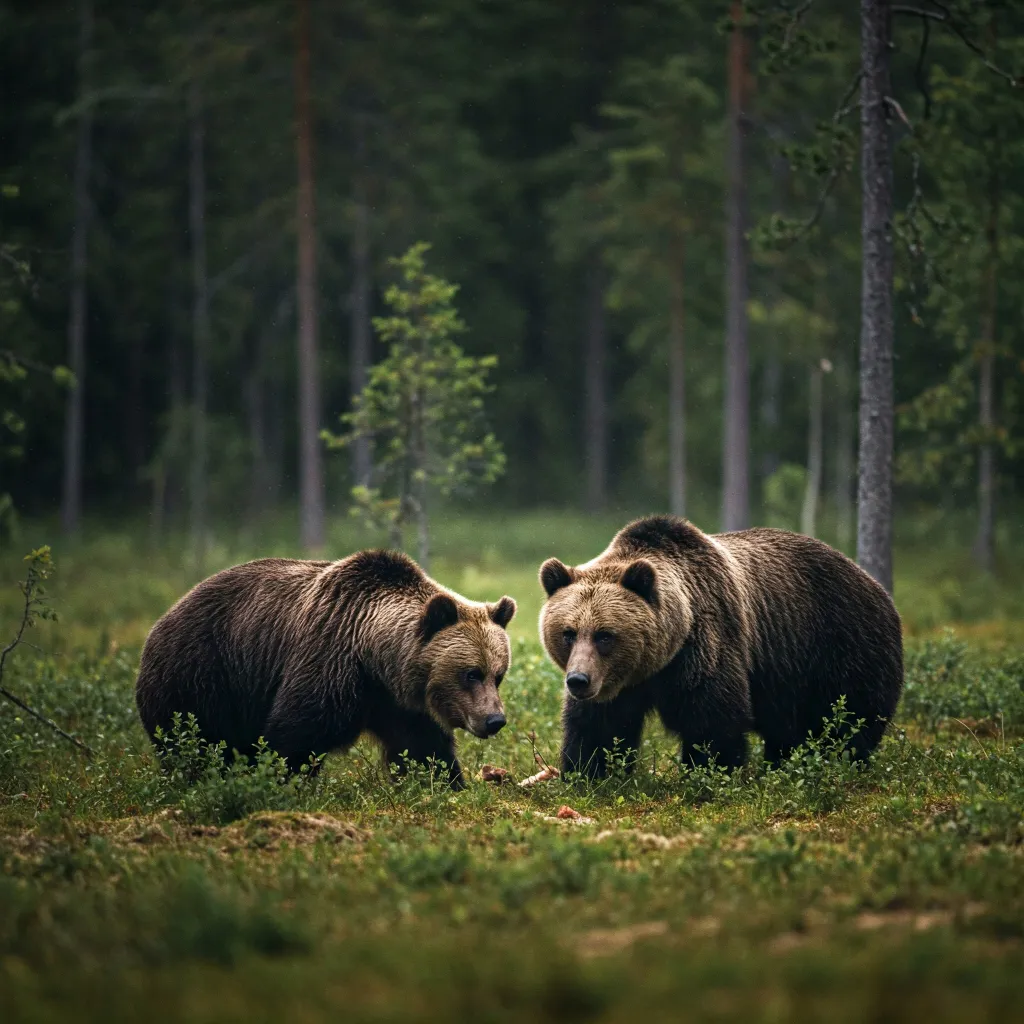Why Bears Are Nature’s Toughest Survivors: 12 Wild Facts You Need to Know

Discover 12 fascinating and lesser-known facts about bears that showcase their incredible survival skills. From hibernation secrets to surprising behaviors, learn why bears are nature’s ultimate survivors.
Bears Can Hibernate Without Eating, Drinking, or Waking for Months
Bears are masters of hibernation, a state of deep sleep that allows them to survive harsh winters without food or water. During hibernation, their heart rate drops from 40-50 beats per minute to just 8-10 beats, and they don’t urinate or defecate. Remarkably, they can recycle their waste into proteins, maintaining muscle mass and energy. This adaptation helps them conserve energy and survive in environments where food is scarce. Source: National Park Service.
Bears Have an Incredible Sense of Smell
A bear’s sense of smell is one of the most powerful in the animal kingdom, estimated to be 2,100 times better than a human’s. They can detect food sources from miles away, including carcasses, berries, and even human food. This keen sense of smell is crucial for their survival, helping them locate food in dense forests and vast wilderness. It’s also why campers are advised to store food securely in bear country.
Bears Are Surprisingly Fast Runners
Despite their bulky appearance, bears can run at speeds of up to 35 mph (56 km/h). This makes them faster than most humans and even some horses. Their speed, combined with their strength, makes them formidable predators and helps them escape threats. Whether chasing prey or fleeing danger, bears’ agility is a key survival trait.
Bears Can Climb Trees with Ease
While not all bears are expert climbers, many species, like black bears, can scale trees effortlessly. This skill helps them escape predators, reach food sources like honey or fruit, and even nap in safety. Cubs often climb trees to avoid danger while their mothers forage below. This adaptability makes them versatile survivors in diverse habitats.
Bears Are Omnivores with a Varied Diet
Bears are opportunistic eaters, consuming everything from plants and berries to fish and small mammals. Their diet varies by season and location, allowing them to thrive in different environments. For example, grizzly bears in Alaska feast on salmon during spawning season, while pandas rely almost entirely on bamboo. This dietary flexibility is a key factor in their survival.
Bears Have a Unique Way of Communicating
Bears use a combination of vocalizations, body language, and scent marking to communicate. They growl, moan, and even “purr” to express emotions or warn others. Scent marking, often done by rubbing against trees, helps establish territory and attract mates. This complex communication system is vital for their social interactions and survival.
Bears Can Swim Long Distances
Bears are excellent swimmers, capable of covering long distances in water. Polar bears, for instance, can swim for days without rest, using their large paws as paddles. This skill helps them hunt seals, cross icy waters, and escape threats. Even non-aquatic species like black bears are strong swimmers, often seen cooling off in lakes and rivers.
Bears Have a Remarkable Memory
Bears possess an impressive memory, especially when it comes to food sources. They can remember the locations of fruit trees, berry patches, and even human garbage sites for years. This cognitive ability allows them to return to reliable food sources season after season, ensuring their survival in changing environments.
Bears Can Survive in Extreme Climates
From the freezing Arctic to the scorching deserts, bears have adapted to thrive in some of the planet’s harshest climates. Polar bears have thick fur and blubber to withstand sub-zero temperatures, while sloth bears in India have adapted to hot, humid environments. Their ability to endure extreme conditions is a testament to their resilience.
Bears Have Few Natural Predators
Adult bears have few natural predators, thanks to their size, strength, and defensive abilities. While cubs may fall prey to wolves or other large predators, adult bears are apex predators in their ecosystems. This lack of natural threats allows them to focus on foraging and raising their young, contributing to their survival.
Bears Play a Crucial Role in Their Ecosystems
Bears are keystone species, meaning their presence is vital for maintaining the balance of their ecosystems. For example, by spreading seeds through their scat, they help regenerate forests. Their hunting and foraging behaviors also control prey populations, ensuring a healthy environment for other species.
Bears Have an Unusual Way of Walking
Bears are plantigrade, meaning they walk on the soles of their feet, much like humans. This gives them a flat-footed gait, providing stability and strength. Their unique walking style allows them to climb, dig, and even stand on their hind legs, making them versatile and adaptable survivors in the wild.
Comments
Loading comments...